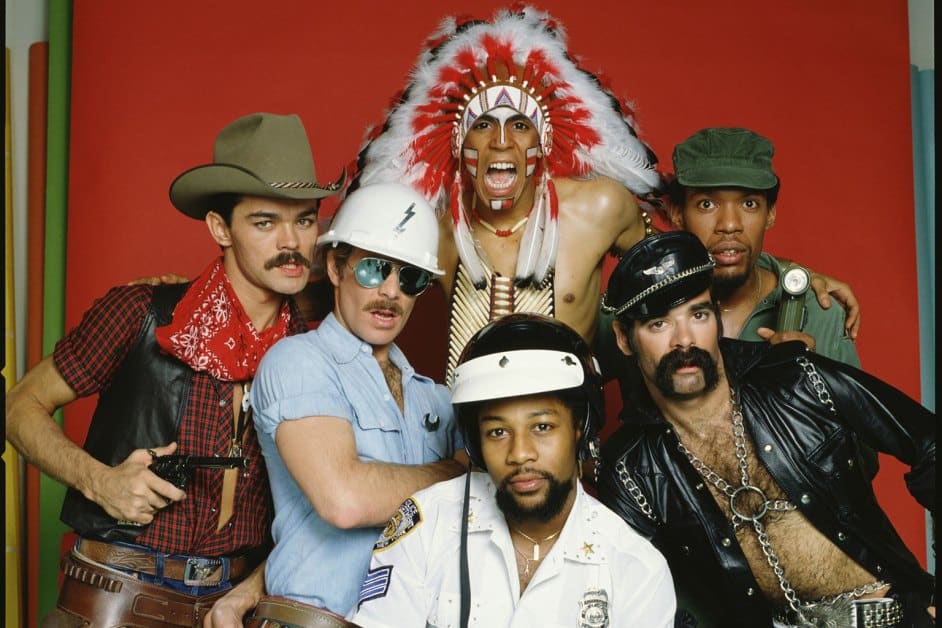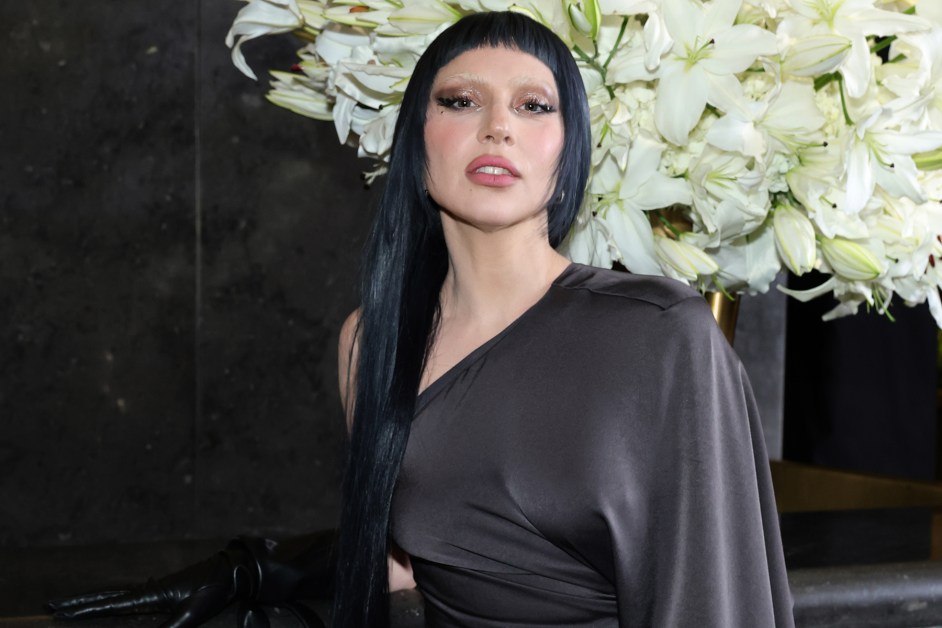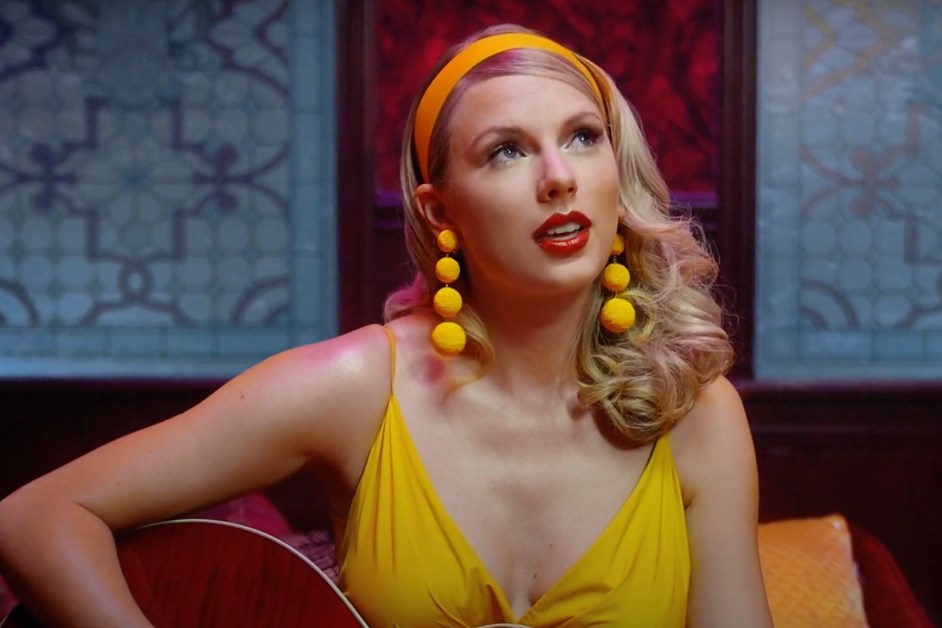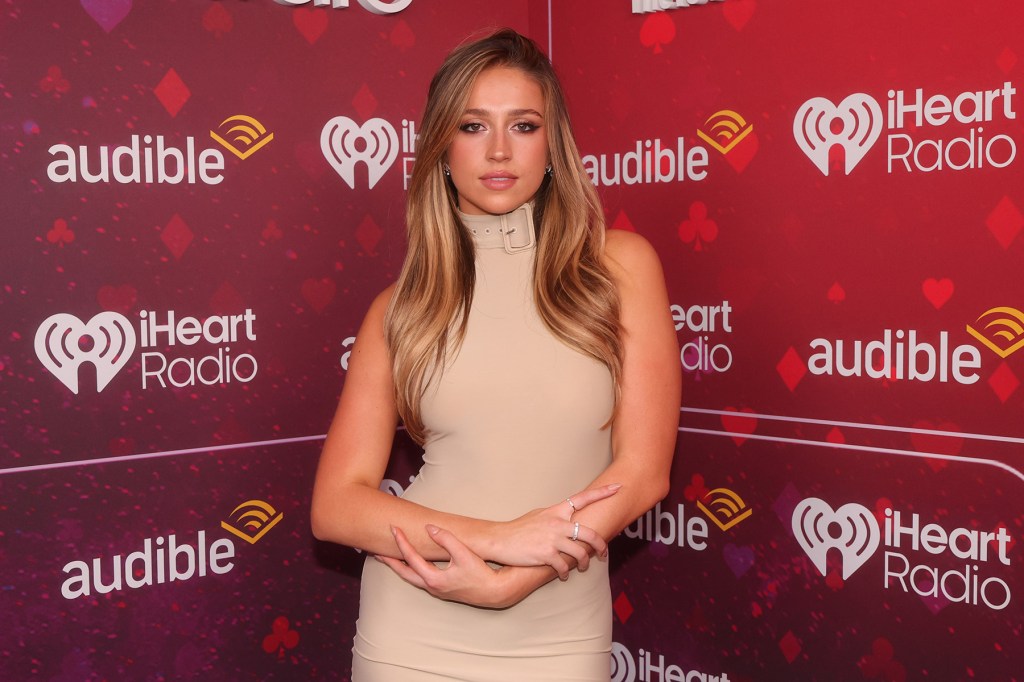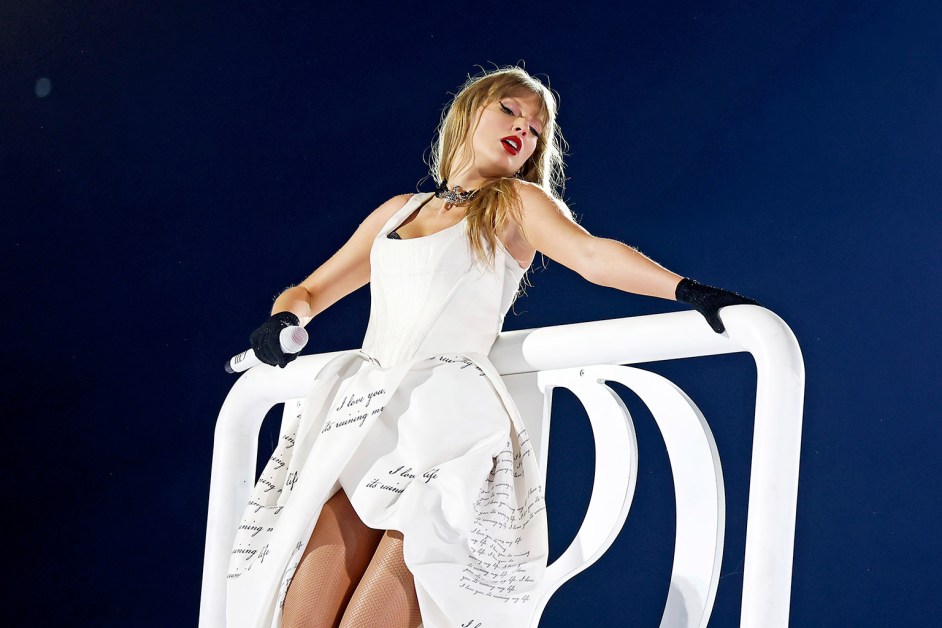Pop
Page: 5
Get the party started on the floor with these tracks perfect for a big group dance.
11/19/2025
Trending on Billboard
Ariana Grande swooped in for a solo Wicked: For Good promo appearance on The Tonight Show on Tuesday night (Nov. 18), and while her movie bestie Cynthia Erivo is skipping interviews on the red carpet ahead of Friday’s opening of the sequel after losing her voice, Grande broke from their silent solidarity pact for a night to belt out some famous duets with host Jimmy Fallon.
The pair ran through a History of Duets, opening with “For Good” from Wicked, naturally, before dipping into Marvin Gaye and Tammi Terrell’s titanic “Ain’t No Mountain High Enough,” bopping and swaying to the soul classic’s groove before taking a hard left turn. Fallon steered into a bit of “Anything You Can Do (I Can Do Better) from the 1946 Broadway musical Annie Get Your Gun, with Grande trying to steal back the spotlight with her “no you can’t!” to his “yes I can!” as the two playfully tried to push one another out of frame.
Grande firmly grabbed the attention back by busting into the powerhouse Lady Gaga bits from “Shallow,” with Fallon sitting back as she dove into the deep end, then joining her to croon about rising to the surface in his best Bradley Cooper impersonation. They then slipped into a few lines from the iconic Brandy and Monica jam “The Boy Is Mine” before cranking things up for Bruno Mars and ROSÉ’s “Apt.” and downshifting into the soaring Aladdin ballad “A Whole New World.”
Fallon slipped on some nerdy glasses for a swoon through “Suddenly, Seymour” from Little Shop of Horrors before cueing up the big finale, Bill Medley and Jennifer Warnes’ iconic, Oscar-winning “(I’ve Had) The Time of My Life” from Dirty Dancing. Fallon surely made his show’s lawyers nervous by offering to do the signature lift from the 1987 Patrick Swayze/Jennifer Grey dance romance. Grande got a head start and then took off, landing in Fallon’s arms as he awkwardly spun her around over his head.
Okay, kidding, it was just a stuffed Ari doll, though she sold it by pretending her hip was sore from the high-flying bit.
Grande had plenty to say during her 10th appearance on the Tonight Show, promoting the anticipated movie musical, of course, but also her upcoming appearance on the Dec. 20 Christmas episode of Saturday Night Live, where she will be joined by musical guest Cher. “I’m so excited,” she said, noting that she didn’t find out the pop legend would be joining until two days before it was announced. “I almost passed out. I had no idea what to do. What an honor.”
And not for nothing, Grande predicted that it would be “one of the gayest SNL episodes that has ever happened, right?”
She also talked about what it felt like to film both Wicked movies at the same time, saying it’s been interesting to watch it so many years after the cast finished shooting. “So in my head they’re both one story and one experience,” she said, while happily taking Fallon’s praise for her wand skills in the second half of the blockbuster Broadway adaptation. “It got caught in my wig a few times,” she admitted as Jimmy pulled out a massive glittery prop from the film and asked the movie’s star to show off some of her impressive wand work.
Watch Grande on The Tonight Show below.
The other artists who recorded tracks penned by Mother Monster might surprise you.
11/18/2025

Trending on Billboard
Elon Musk has hit back at Billie Eilish after the singer slammed the world’s richest man last week in an infographic suggesting how the Tesla CEO could use his historically massive wealth to do some charitable good. Borrowing a page from his former DOGE boss Donald Trump’s book of sexist insults targeting women’s intelligence, Musk posted a message responding to Eilish’s graphic, saying, “She’s not the sharpest tool in the shed.”
Explore
See latest videos, charts and news
Eilish’s post came amid news last week that Musk, 54, could soon become the world’s first-ever trillionaire. The 23-year-old “Bury a Friend” singer has had America’s wealth gap on her mind lately, including at WSJ Magazine‘s 2025 Innovator Awards last month, where late night host Stephen Colbert presented her with the honor, noting that she has raised more than $11.5 million for organizations addressing food insecurity and climate change through her Hit Me Hard and Soft tour.
Eilish then proceeded to lay down the gauntlet for American billionaires — including Meta boss Mark Zuckerberg (net worth $228 billion), who was in the room — suggesting that perhaps they could use some of their cash to help others in need. “I’d say if you have money, it would be great to use it for good things and give it to some people that need it,” Eilish said. “Love you all, but there’s a few people in here that have a lot more money than me. If you are a billionaire, why are you a billionaire? No hate, but give your money away, shorties.”
But it was what she said last week about Musk that appeared to get under his skin. Eilish posted the series of infographics suggesting the world of good that Elon could do with his money, including spending $40 billion every year to end hunger by 2030 or provide universal safe clean water for the planet for the next seven years with for $140 billion, save all 10,443 critically endangered species by spending $1-$2 billion annually to bring them all down to endangered status, or rebuild war-ravaged Gaza and the occupied West Bank for $53.2 billion.
Eilish doubled-down on her suggestion last Thursday (Nov. 13), specifically slamming Musk in her Instagram Story, calling him a, “f–king pathetic p–sy b–ch coward.” Billie’s remarks came after a shareholder vote paved the way for Musk — already the world’s richest man with a net worth of $465 billion — to rake in $1 trillion in Tesla stock if he delivers on specific performance goals over the next decade.
While Musk reportedly donated nearly $1.9 billion shares of Tesla to unnamed charities in 2022 — as well as $5.7 billion worth of shares in 2021 — a March 2024 New York Times story said that unlike fellow billionaire Bill Gates, who has used his massive wealth to improve health care across Africa, Musk’s philanthropy has “been haphazard and largely self-serving, making him eligible for enormous tax breaks and helping his businesses.” The paper reported that Musk has seeded his charity with tax-deductible donations of more than $7 billion in stock since 2020, noting that the foundation housing the money has “failed in recent years to give away the bare minimum required by law to justify the tax break.”
In addition, according to the Times, the foundation has not hired any staff, with the billions in its coffers overseen by a board consisting of Musk and two volunteers, one of whom devoted the equivalent of six minutes per week working on its charitable works. A Times analysis also found that the Musk Foundation’s giving in 2021 and 2022, the latest years for which the full data was available at the time, about half of the donations had some link to Musk, one of his employees or one of his businesses.
At press time a spokesperson for Eilish had not returned Billboard‘s request for comment on Musk’s post.
Check out Musk’s post below.
Swift recorded namesake songs for seven of her 12 studio albums.
11/17/2025
Trending on Billboard Two hands on the steering wheel, because Tate McRae’s sports car is about to drop off a four-pack of brand-new songs. The pop star revealed the track list for her upcoming So Close to What deluxe edition on Monday (Nov. 17), which is set to arrive later this week. In addition to […]
So, they knelt to the ground and pulled out a ring. Now it’s time to pick some music.
11/17/2025
Trending on Billboard
Disney+ dropped the two-and-a-half minute trailer for the upcoming refresh of The Beatles Anthology series. The beloved documentary chronicling the formation, fame and frenzy surrounding the Fab Four — which was originally broadcast in 1995 in the U.S. and U.K. before being released on video — will make its streaming debut on the service beginning Nov. 26.
The first three episodes will drop that day, followed by parts 4-6 on Nov. 27 and episode 7-9 on Nov. 28. The series has been restored and expanded from eight to nine episodes, including a new ninth ep featuring what a release promised was, “illuminating and previously unreleased footage of Paul, George and Ringo during the creation of the original 1990s Anthology series and music project.”
The series follows John Lennon, Paul McCartney, Ringo Starr and George Harrison as they look back on the legendary band’s eight-year rise to global superstardom, with the Disney+ version slated to feature a new restoration of the footage and a sound mix overseen by the Apple Corps production team working in conjunction with director Peter Jackson’s Park Road Post crew in Wellington, New Zealand.
The trailer opens with the voice of Lennon describing the origins of the group. “I met Paul and said, ‘do you want to join me band?’… Then George joined. Then Ringo joined,” he says. What follows is a whirlwind tour through the group’s early years, with Ringo explaining, “We’ve heard it from everybody else, now you can hear it from us” as archival footage has Lennon lamenting, “the demand on us was tremendous.”
The clip then takes us from a series of high points, the group’s legendary Feb. 1964 Ed Sullivan appearance that launched a million bands to the first-ever major stadium rock show at New York’s Shea Stadium in 1965, which was followed by a second show at Shea that Starr completely forgot about. “I thought we only played there once,” Starr says. “How was it?”
The new ninth chapter finds the then living members — McCartney, Starr and Harrison — regrouping in 1995 to work on the first “new” Beatles song since the group’s split in April 1970, “Free as a Bird.” In addition to the original doc series, The Beatles Anthology project included a four-volume set of double albums (which also contained another “new” song “Real Love”) as well as 2000 coffee table book.
“Nothing will ever break the love we have for each other,” says Lennon, who was murdered by a crazed fan outside his New York apartment building on Dec. 8, 1980. “The Beatles exist without us,” adds Harrison, who died in 2001 of cancer at age 58.
Watch The Beatles Anthology trailer below.

Trending on Billboard Lorde gave Sadie Sink the “Green Light” to absolutely let it rip during the singer’s show at the London O2 Arena on Sunday night (Nov. 16). The Stranger Things star was a surprise special guest during the first of two shows at the arena on Lorde’s ongoing Ultrasound world tour in support […]
Trending on Billboard
Reneé Rapp is bringing her Bite Me era to Australia, locking in her first headline shows down under to bookend her AO Live debut at the Australian Open 2026.
Before her AO Live debut in Melbourne, Rapp will headline two exclusive Australian dates on her Bite Me Tour. She’ll play Brisbane’s Riverstage on Jan. 27, 2026, then Sydney’s Hordern Pavilion on Jan. 29, marking her first standalone shows in the country, ahead of her AO Live Presents: Reneé Rapp at Melbourne Park’s John Cain Arena on Jan. 31, prior to the Australian Open women’s final.
Explore
See latest videos, charts and news
The set is part of the AO Live concert series, where she joins a 2026 bill that also features The Kid LAROI, Spacey Jane, The Veronicas, SOFI TUKKER and Peggy Gou.
According to Ticketmaster, Mastercard cardholders and fans with access to the artist presale can jump in from Wednesday, Nov. 19, at 9 a.m. local time, followed by a Live Nation presale on Thursday, Nov. 20, at 10 a.m. General on-sale begins Friday, Nov. 21, at 10 a.m. All shows are mobile-ticket only, with a limit of 10 tickets per customer per show.
The Australian run extends Rapp’s busy Bite Me campaign. The album, released Aug. 1, 2025, became her first top 10 entry on the Billboard 200, where it debuted in the top three, and earned her first U.K. No. 1 album on the Official Albums Chart.
The project followed her 2023 debut Snow Angel, which reached No. 44 on the Billboard 200 and scored the biggest first week for a debut album by a female artist that year, helping establish Rapp as a rising pop force beyond her theater and TV fanbase.
Rapp has been touring heavily behind Bite Me across North America in 2025, with the trek scheduled to continue through Europe in March 2026 following her rescheduled U.S. dates this November after a short illness-related postponement.

 State Champ Radio
State Champ Radio 